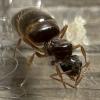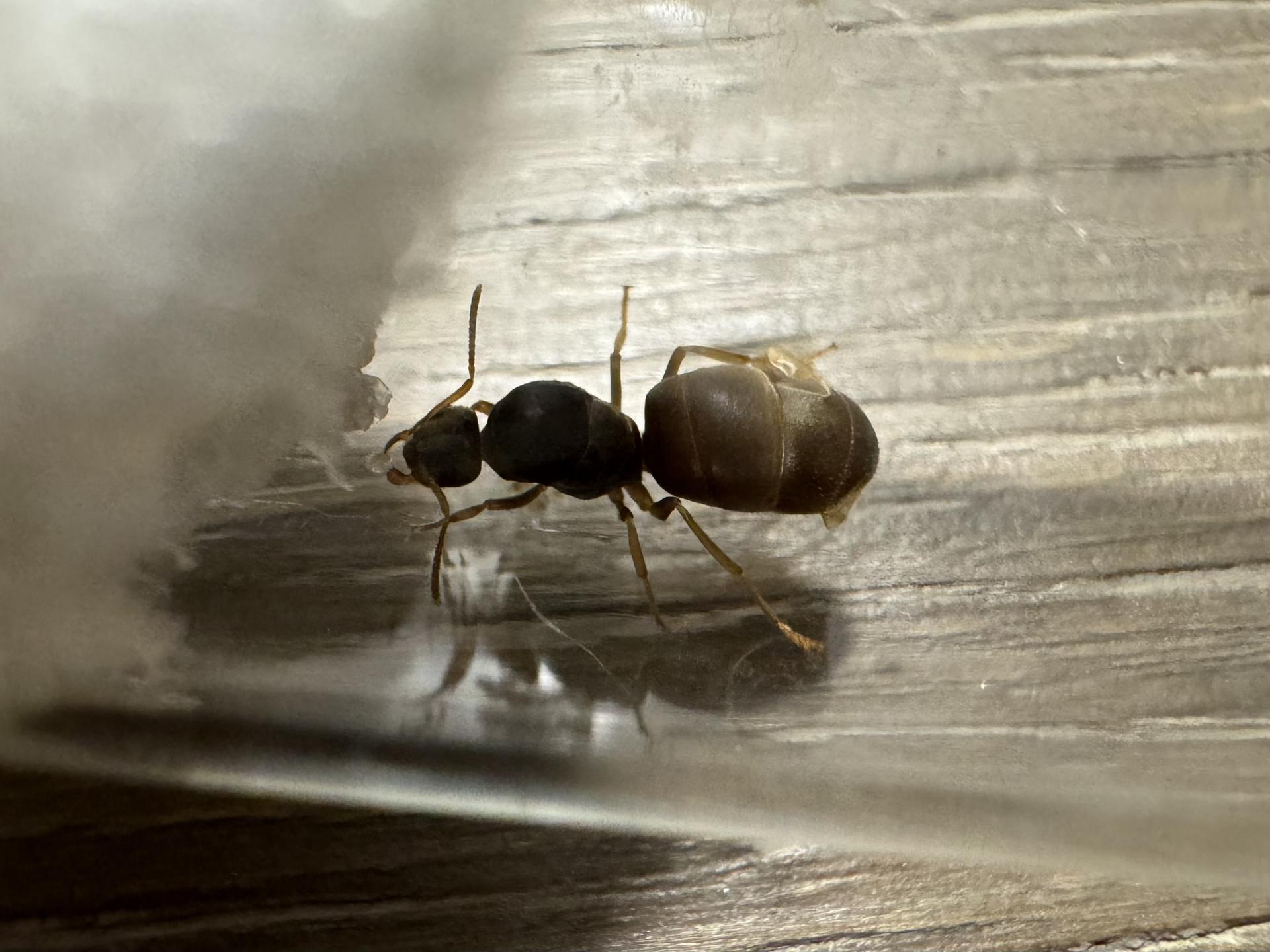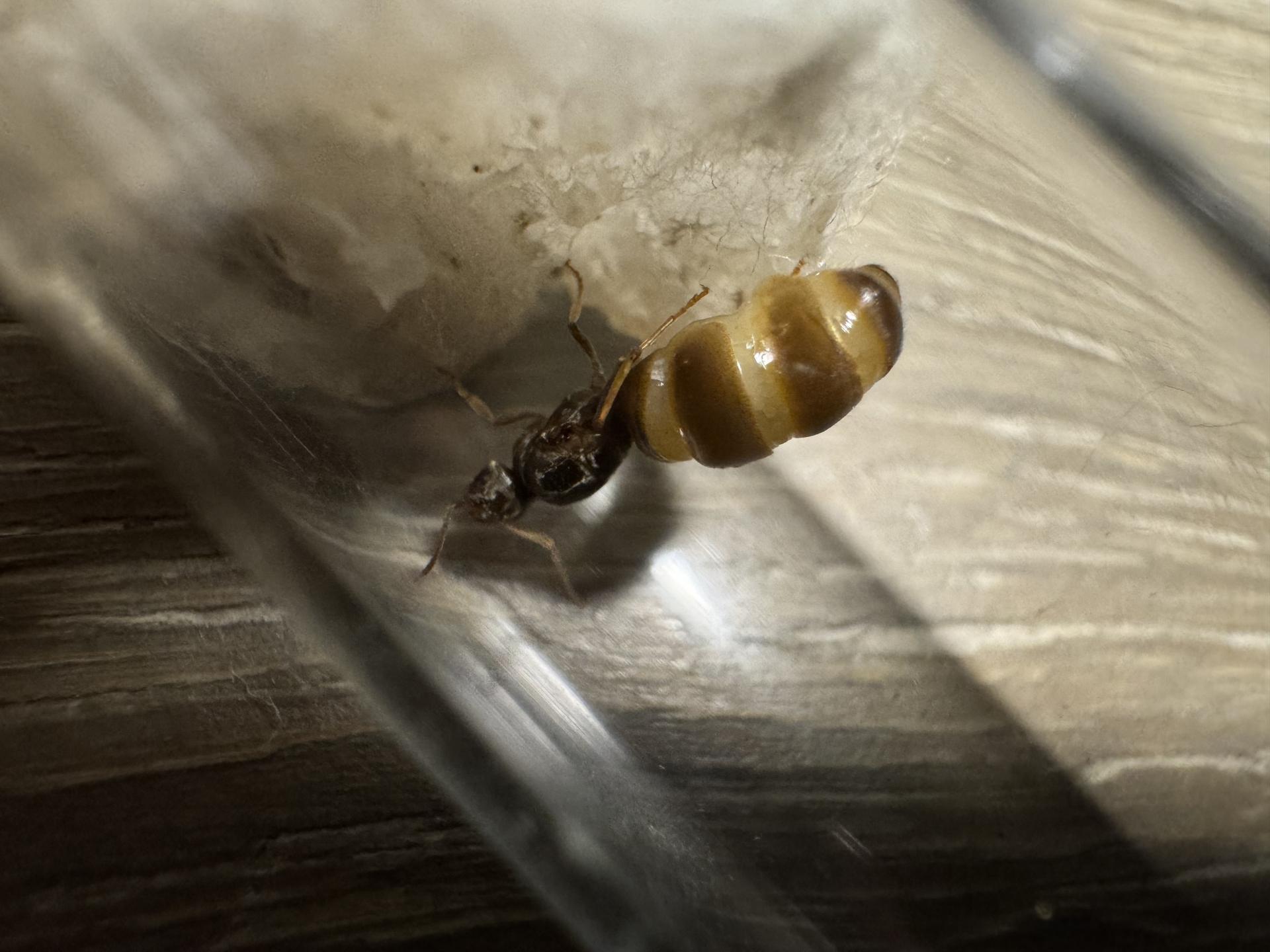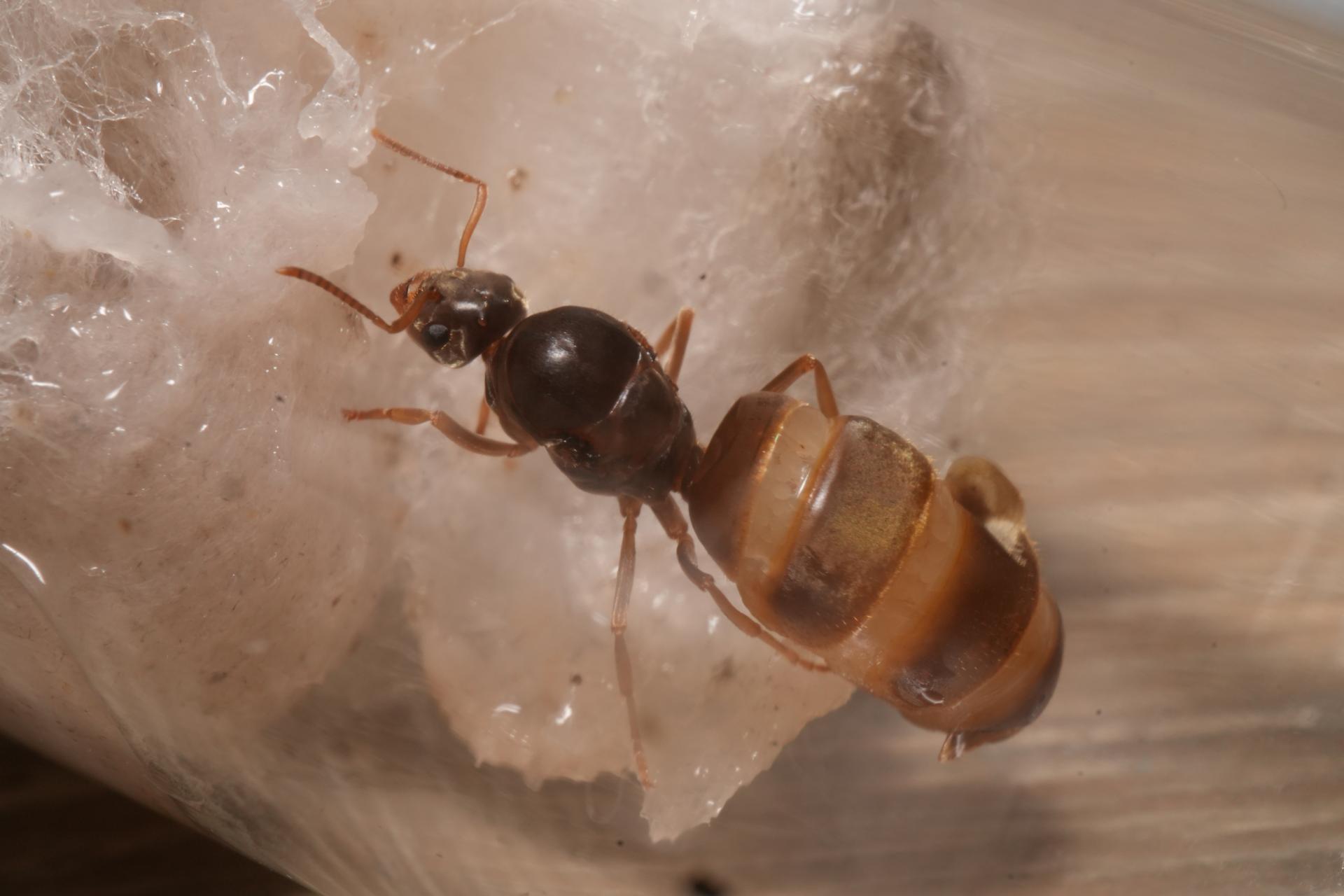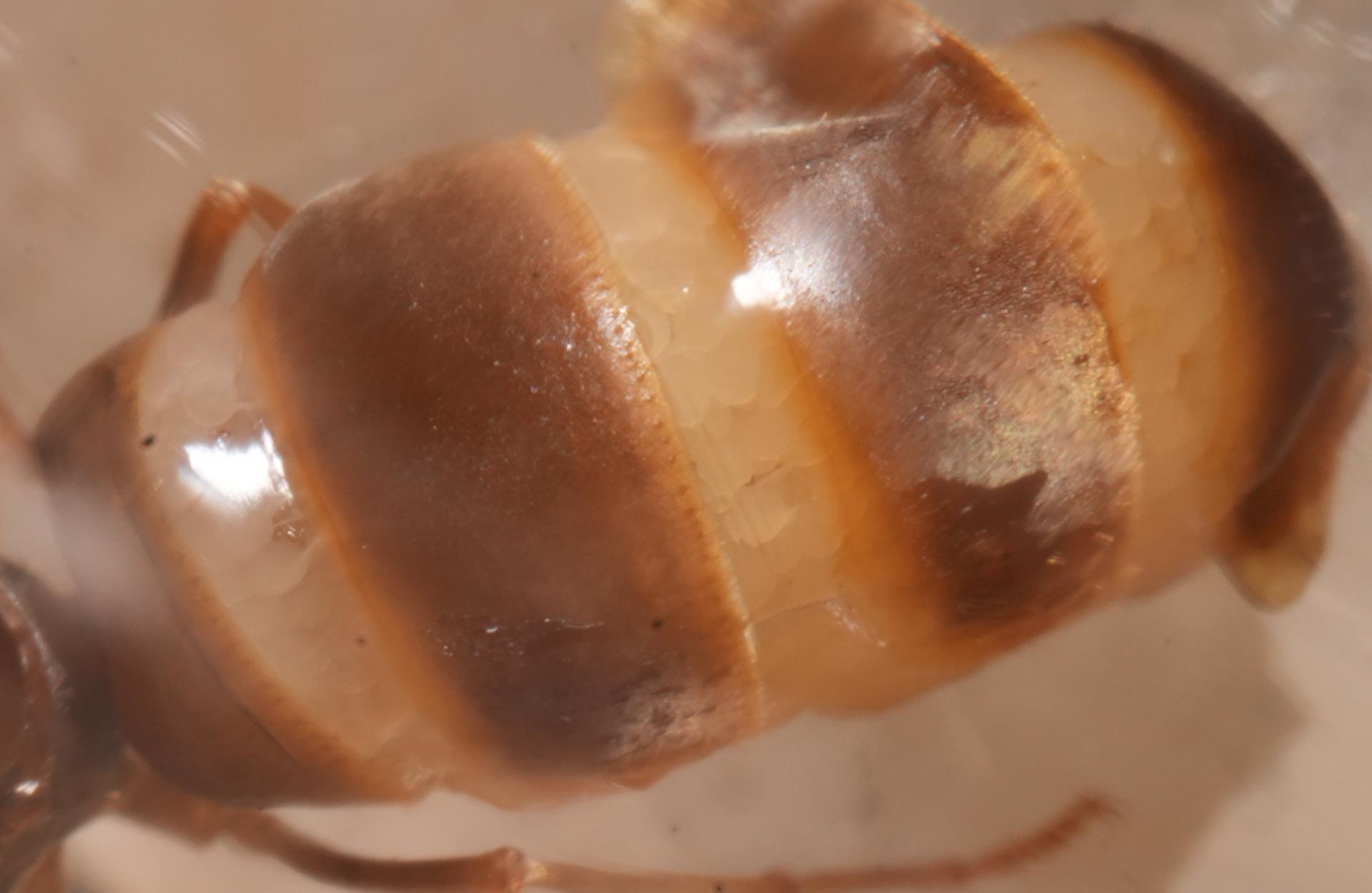I know I may be totally wrong, but I associate extreme physogastric appearances to possible egg-laying issues. It happened once with a proven Liometopum queen I had, with an established colony. She stopped laying and instead her gaster ballooned as per your photo. As I often have pet birds I am aware of things like egg-binding and got pretty worried. Eventually that Lio queen died without having laid any new eggs. When I saw one of my Camponotus also becoming overly physogastric, I actually took her out (she only had a couple workers so that was easy), put her in a plastic bag, and did some gaster massage (at the egg-laying end) with a toothpick ... yeah, I know, possibly silly. Either way the condition went away soon after that. P.S. I have some idea of what's normal for the species I mentioned so I could tell when it was getting abnormal.
Edited by OhNoNotAgain, March 27 2024 - 5:52 PM.
Past & Present
Veromessor pergandei, andrei, stoddardi; Novomessor cockerelli
Camponotus fragilis, Camponotus sansabeanus (inactive), vicinus, laevigatus/quercicola, CA02
Pogonomyrmex subnitidus, P. californicus (inactive)
Liometopum occidentale (inactive); Prenolepis imparis; Myrmecocystus mexicanus (inactive); Tetramorium sp. (inactive); Lasius sp.
Termites: Zootermopsis angusticollis, and a box of drywood termites that can't be seen
Isopods: (most no longer keeping) A. gestroi, granulatum, kluugi, maculatum, vulgare; C. murina; P. hoffmannseggi, P. haasi, P. ornatus; V. parvus, P. pruinosus, T. tomentosa
Spoods: (no longer keeping) Phidippus sp., other

